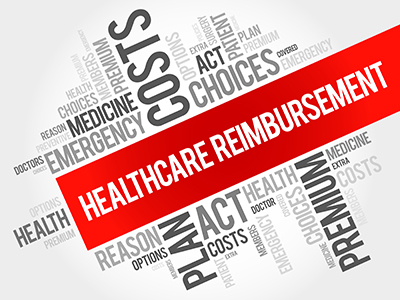In health care, acronyms abound—ACA, FSA, FMLA, CDHP, HSA, etc. It can be a bit overwhelming.
 One of the lesser known but still important healthcare-related acronyms is HRA. It stands for health reimbursement account (or health reimbursement arrangement), and it’s a type of account in which employers reimburse employees for qualified medical expenses.
One of the lesser known but still important healthcare-related acronyms is HRA. It stands for health reimbursement account (or health reimbursement arrangement), and it’s a type of account in which employers reimburse employees for qualified medical expenses.
HRAs are similar to flexible spending accounts (FSAs) in the sense that they are generally managed by the employer and are paid out after the expense is incurred by the employee. However, that’s where the similarities end. Unlike an FSA, an HRA is generally funded by the employer as a type of employee benefit. There are annual limits on some types of HRAs, which depend on the type of HRA offered. In an HRA, the employer’s reimbursements to the employee are usually not taxed,[i] which can be quite useful for both the employer and the employee.
Essentially, this type of plan has a lot of flexibility and leeway to be set up in a way that is best for those involved.
What Expenses Can Be Reimbursed?
Here are some types of expenses often reimbursed with HRAs:[ii]
- Insurance deductibles (i.e., money spent on medical services before the deductible is met)
- Patient copays or payments for office visits
- Transportation costs related to getting medical treatment
- Dental work or dental insurance premiums
- Eye care or vision insurance premiums
- Pharmacy expenses
- Insurance premiums, in some cases
- Meals while receiving medical care
- Therapy sessions
Note that which options are available may depend on the type of HRA that is set up. There are multiple types to choose from, including qualified small employer, individual coverage, group coverage, excepted benefit, dental/vision, and retiree HRA.
HRA Customization Options for Employers
Here are some options for employers when setting up an HRA:
- Employers can decide what specific expenses will and will not be reimbursed, as long as they remain within the overall legal guidelines. There is Internal Revenue Service (IRS) guidance on which expenses can be considered medical expenses.
- Employers can decide whether unused portions of the allocated HRA will be rolled over to the following year or returned to the employers. Or, they could opt to not allocate funds in advance and simply pay as needed, with no rollover question.
- Employers can opt to have the HRA in funds that can be immediately accessed, allowing the employee to use a debit card to pay immediately for allowed expenses rather than be reimbursed.
- Employers decide the maximum reimbursement they’re going to provide for each employee. There are some caps in place, depending on the type of plan offered, but these are fairly generous.
Offering an HRA is one option that some employers go for when they don’t feel they can afford to provide a full health insurance benefit. This can be especially useful for small employers that are not otherwise required to provide health insurance but still want to remain competitive in the talent marketplace by offering some form of reimbursement to offset healthcare costs for employees. This type of benefit is incredibly flexible and can be affordable because employers can set their own expense limits. While there are a few restrictions, this plan is generally very flexible for employers.
[i] Note: Not all versions of HRAs are tax free for employees.
[ii] Note: The rules around HRAs are changing as of January 2020. Some of the information presented here is new and differs from previous rules regarding these types of reimbursements.
